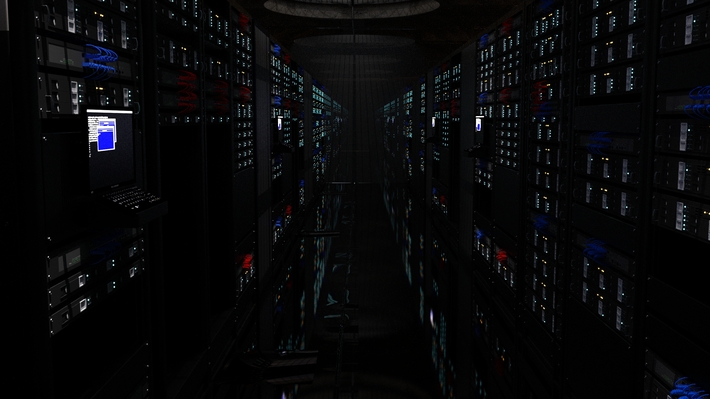
The field of information technology loves to prove that the only constant is change. What intensifies the truth of this axiom is that we are living in the greatest period of technological change that humans have experienced so far. Any one of the several megatrends that are occurring simultaneously could be viewed independently as one of the biggest changes in history.
Together, they are radically changing the way people communicate and the way networks are built to support them. These trends include 5G, cloud and edge computing, and the IoT (Internet of Things.) While each of these is unique in its own way, one thing they share is the need for a new class of network for the communications infrastructure that underpins the vision.
The rise of 5G
5G is widely considered the fastest–growing mobile technology in history. According to Omdia, telecom operators added 225 million 5G subscribers between Q3 2019 and Q3 2020. As of December 2020, there were 229 million 5G subscriptions globally a 66% increase over the prior quarter.
With the goal of unlocking unimaginable new services based on greater bandwidth and lower latency, 5G¯telecommunications operators¯are¯building new datacenters and expanding the number of access points to a massive scale. ¯
Cloud and edge computing
Industry experts expect increased investments in¯edge¯capacity to reduce latency and support personalized content delivery and custom security policies.¯Cloud and edge computing datacenter operators continue to expand to hyper¯scale, delivering more intelligent,¯localized,¯and autonomous computing resources for an¯increasing¯set of users,¯and applications.
¯¯
IoT
The IoT¯continues to add more things as innovators discover its possibilities. This includes the invention of¯devices and sensors spanning personal use,¯entertainment¯and quality of life, to factory automation, safety, connected cities, smart power grids, new applications of machine learning and artificial intelligence,¯and so much more.
New network requirements
The possibilities that these trends engender necessitate new network designs and theres too much at stake for failure to be an option. Datacenter designers and operators have emerged with a clear set of networking requirements that cannot be compromised:
Security: A new distributed architecture is essential in light of so many users, devices and applications able to enter the network in many configurations.
Performance: Line-rate networking with ultra-low latency that scales from 25 gigabit Ethernet in the servers to 100 gigabit Ethernet and beyond in the network links that connect them is paramount.
Agility: In a world of software-defined-everything, the network must provide hardware performance at the speed of software innovation. This equates to programmability that allows the hardware to evolve as fast as new networking protocols and standards do, as well as the threat landscape driven by bad actors.
Orchestration: New methods for automation, configuration and control are needed to orchestrate and manage so many elements at this scale.
Economics: A fundamental requirement for minimal costs shifts the design of networks towards open, standard and commodity off-the-shelf products. Cost at this incredible scale cannot be forgotten.
Efficiency: The central processing units (CPUs), the most valuable and costly resources within the datacenter severs, spend most of their time supporting the applications, services and revenue they were intended for, offloading all burdensome workloads such as networking, data and security processing.
Sustainability: This last piece ensures that the network operates as required, but in an environmentally friendly size and power configuration.
How programmable SmartNICs fit in
Due to this new set of non-negotiable requirements, networks are moving away from large, proprietary, expensive, monolithic, vertically integrated systems and a new method of software-defined networking has emerged.
To address the problems created by the decline of Moores Law, a new heterogeneous processing architecture exists¯where expensive and burdensome workloads are¯offloaded from the CPUs.¯This model has proven to be successful in the past, with GPUs offloading video and graphics processing from¯the¯CPU. This same model is now being applied for data,¯network,¯and security processing.¯However, the applications underpinned by 5G, cloud, edge computing and IoT often fail on standard servers with basic NICs.
As Moores Law ends¯and¯other megatrends skyrocket, organizations prefer SmartNICs as the method to avoid these problems and help advance datacenter computing.¯A¯SmartNICs primary function is to operate as a co-processor inside of the server, offloading the CPU¯from the burdensome tasks of network and security processing, while simultaneously¯accelerating applications¯on multiple dimensions. It uniquely meets the network design requirements for performance, agility, efficiency, security, economics,¯orchestration¯and sustainability.¯
Equipped for the future
5G, cloud and edge computing, and the IoT are radically changing the way people communicate. And that means that these megatrends are changing the way networks are built to support them. Organizations need a new class of network with stringent requirements for their communications infrastructure. SmartNICs enable this network architecture, resulting in high performance at a reduced cost along with meeting all the other needed requirements. They form a critical element of the future-forward infrastructure organizations need to capitalize on todays massive technological shifts.
